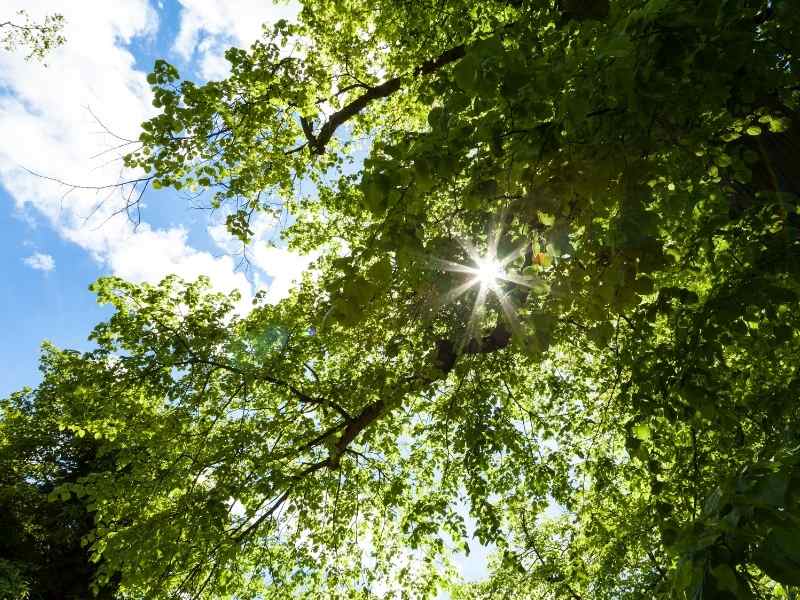In permaculture design, it’s important to take a holistic view, examining the broader picture and larger patterns before we hone in on the details. When we talk about sectors and about zones in permaculture, this is our way of clarifying the patterns we see around us. This is how we use those patterns to inform our decisions and create our plans.

Permaculture Site Analysis
When a permaculture designer starts to think about designing a garden, they do not start with aesthetic considerations or specific plants. Rather, they look at the site carefully, thinking about the things that make it the way it is, and the various different factors that act upon the site.
This might sound a little complex, but really, all this involves is observation and an understanding of the environment around us.
Permaculture is not an approach that offers “one size fits all” solutions. All the choices we make in design and in gardening should be site specific. By observing the site and making careful note of key features, opportunities, resources, and constraints, we can begin to build up a clear picture that forms the foundation of good design.
Analyzing the site means understanding the geographic positioning, topography, and climate of the area, and developing a sense of the microclimate of the specific location. Permaculture designers will take a close look at each of the above, in order to develop a deep understanding of the specific place.
As well as looking closely at the site itself, developing a clear view of the site means building an understanding of things that act on the environment from the outside.
Permaculture Sectors
In permaculture circles, factors that influence the environment from the outside are called sectors. These directional forces come from outside and play an important role in our decision making.
Sectors are all about flow – movement – the patterns that are created. We look at how these things influence the site, how opportunities can be harnessed and constraints overcome. Often, this understanding helps us see how to turn problems into solutions.
Key sectors to consider are:
- Sunlight
- Water
- Wind
Other external directional forces (outside our immediate control) may also influence our designs. We might also look at:
- Wildfire Risk
- Pollution
- Wildlife
- People
Sunlight
Of course, sunlight is one of the most important external forces acting on a site. The amount of sunlight available, and the direction from which it comes throughout each day and throughout the year is hugely important in determining how the site is best utilized, laid out, and planted.
We can find out where the sun will be at any given time on any given day in any given location simply by observing the natural cycles throughout the year. However, since we cannot always spare the time to simply watch and wait for an entire year, we can consult online sun position charts such as https://www.suncalc.net.
We can also collect information from observation and create sun maps to refer to throughout the year. A sun map is basically a pictorial representation of the movement of the sun, and the shade cast. A sun map might be a simple rough sketch or a far more complex and detailed document.
Although I have never used one, there are inexpensive sunlight calculators you can purchase that can help you determine the amount of sunlight in a specific location on your property throughout the day. This might be a helpful tool for someone who is too busy to observe the area personally and make a visual observation.

It might depict the movement of the sun over the course of a day at a certain time of year. And may also include more information about how this changes as the sun moves across the sky throughout the course of the year.
Once a sun map has been created, it will be easy to see whether a particular part of a site has full sun, partial shade, or deep shade. We can determine which parts of the garden have the most hours of sunlight per day, and which areas have the least. And know when the sunlight is received in each part of the site.
Water
Water and how it moves across the site is also a key thing considered in sector analysis. We need to consider, of course, the rainfall in a particular area. But also how, due to topographical and other details, it flows on, over, across, and through the site.
Hydrology is, of course, closely linked to climate and geography, as well as to the soil on a site and the life-forms found there. Looking at water availability and water flow on a site is crucial to developing a truly sustainable and sensitive holistic design.
Water is of course essential for life. But it can be a destructive force too. Mapping this sector helps us to make sure we can catch and store water and use it wisely. It can also help us mitigate flood risk etc. in areas where this may be a concern.

Wind
Wind is another important sector to consider. Determining and mapping prevailing wind direction, and thinking about the direction, strength, and characteristics of wind throughout the year also helps us to identify opportunities and challenges.
Wind might be a positive element – utilized to generate renewable energy, to provide passive cooling, or to dry clothes, for example.
We might also have to take steps in a design to mitigate against the effects of a cold or drying wind – by creating windbreak hedging or shelter belts on specific parts of a site, for example.
Understanding typical wind patterns for a site can help us develop the best strategies to harness that energy, and to protect people, planting, and other elements from it.
Wildfire Risk
Wind is also an important factor in helping us to identify and map wildfire risk. By looking holistically at the landscape and its flows, we can map the direction of wildfire risk and use that to make sure we do all we can to design for fire safety.
Pollution
Wind and water might also play a role in helping us determine the directional forces of pollution – from nearby factories, farms, or busy roads, for example. Boundary planting and other strategies can help us to reduce its impact on the site. We can also consider other types of ‘pollution’ – visual pollution – unsightly views; and auditory (sound) pollution, for example.
Wildlife
In sector analysis, it can also be helpful to map the broader patterns of wildlife within the area. By taking note of migratory patterns and wildlife corridors, for example, we can help in reducing biodiversity losses and make sure that the site works within the whole to safeguard all those non-human beings who visit and pass through.

People
People also have to be taken into account. Not only the people associated with or using the site itself but also the broader societal systems and communities which can be forces acting on the site and its inhabitants. Understanding the bigger picture in human as well as landscape terms can be key to good design. Considering the neighbors, the community, and the broader socio-economic and political environment is key.
Permaculture Zones
In undertaking site analysis, patterns of human movement are also key within the site itself. In an analysis, and as we begin to form ideas about the layout for various elements within the design, permaculture zoning comes into play.
Zoning is all about practicality and time management. It begins with the simple premise that the elements on a site that we visit most often should be the ones closest to the center of operations.
Permaculture designers generally define up to five zones on any site, though extremely small scale sites can include only two or three of these zones. Zones spread out in sequence with the higher numbered zones used to designate areas visited less frequently, though the zones don’t have to be placed strictly in order moving out from the center. Some areas closer to your home but less accessible may belong to a higher zone.

Zone Zero
Zone zero is the home, or center of operations. This is the hub, or nexus for the patterns of movement on the site – the journey start point and location of return.
Zone One
Zone one elements are usually visited most days, if not every day, often multiple times over the course of a day. Annual kitchen gardens, primary outdoors living areas, rainwater harvesting systems, composting systems and perhaps frequently used utility areas like sheds would usually be part of this zone.
Zone Two
Zone two elements still require time and attention, but are visited somewhat less frequently. This zone may include orchards and forest gardens, perennial vegetable beds, garden ponds, and perhaps chickens or bees, for example.
Zone Three
Zone three is the zone for farmland arable crops and for bigger livestock on larger sites.
Zone Four
Zone four is areas for natural forage and minimal intervention – a woodland area used for fuel or non-timber forest products, for example.
Zone Five
Zone five is essentially wild – a zone for wildlife, mostly if not entirely untouched and unmanaged by human hands.
Book Recommendations For Deeper Study On Permaculture Design
- Bill Mollison and Reny Mia Slay (Author)
- English (Publication Language)
- 208 Pages - 07/06/2025 (Publication Date) - Tagari Publications (Publisher)
Last update on 2025-07-05 / Affiliate links / Images from Amazon Product Advertising API
- Ships from Vermont
- Aranya, Aranya (Author)
- English (Publication Language)
Last update on 2025-07-05 / Affiliate links / Images from Amazon Product Advertising API
- Ships from Vermont
- Hemenway, Toby (Author)
- English (Publication Language)
Last update on 2025-07-05 / Affiliate links / Images from Amazon Product Advertising API
Conclusion
This is a broad overview of what sectors and zones are in permaculture design and how you can begin to think about the analyses of a property. Obviously, each one of these elements goes much deeper in their application to a permaculture design but understanding the basics can go a long way in deciding where to plant, build, and place everything in your plan.






